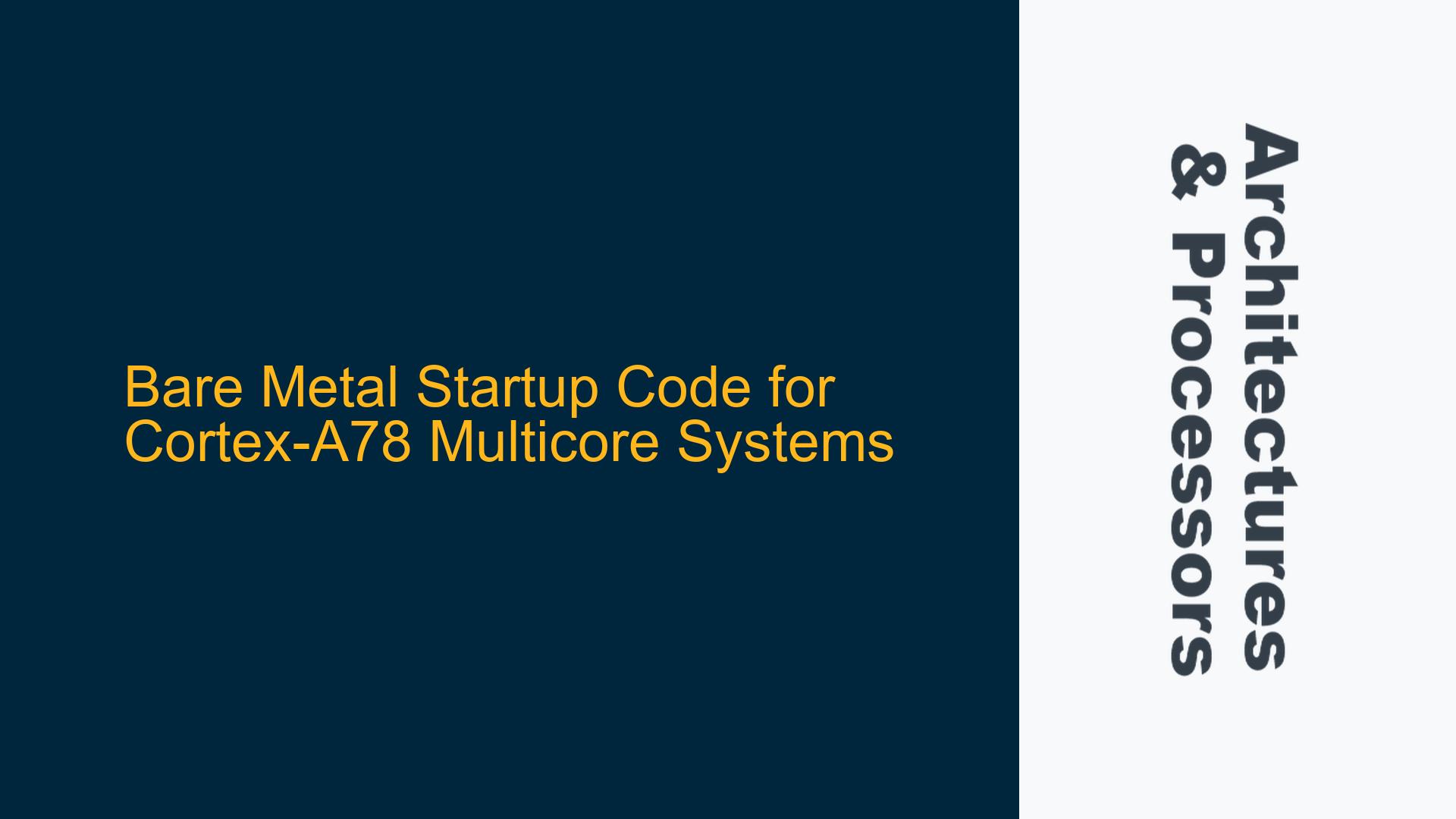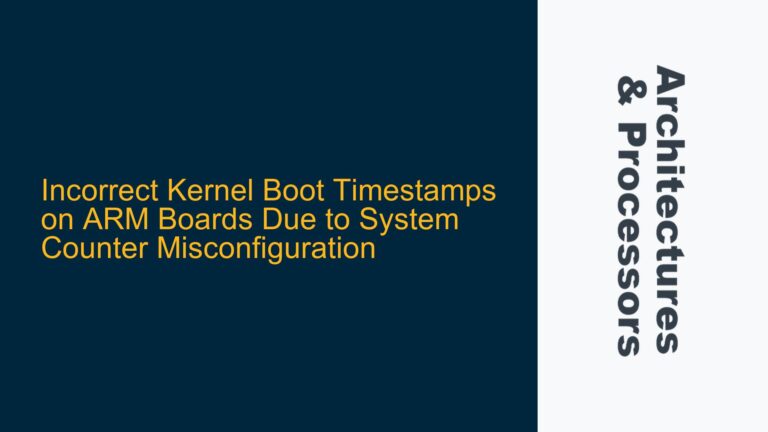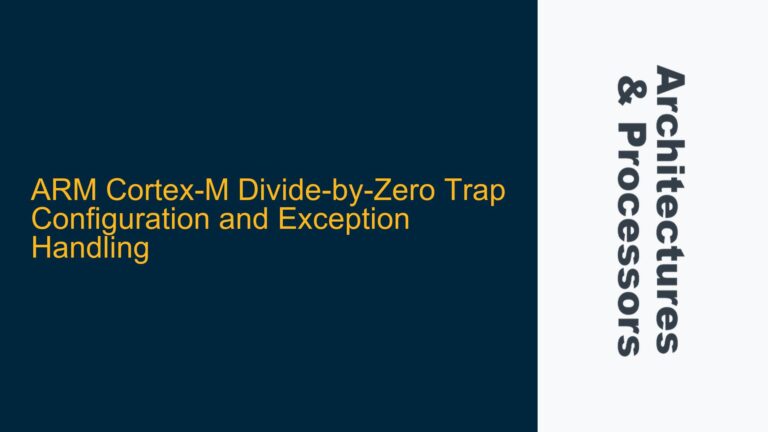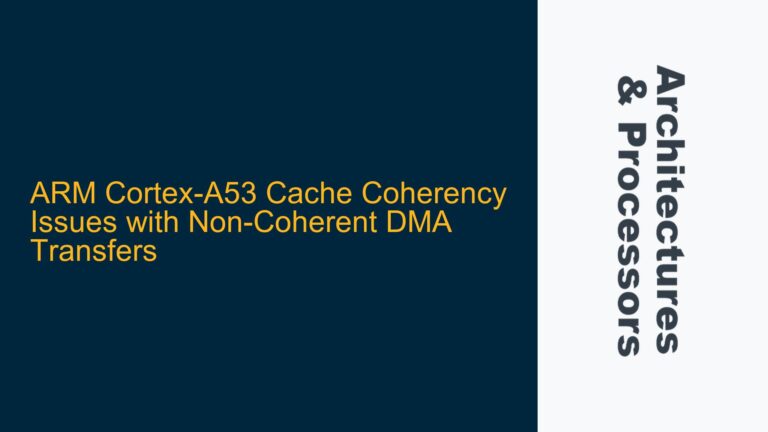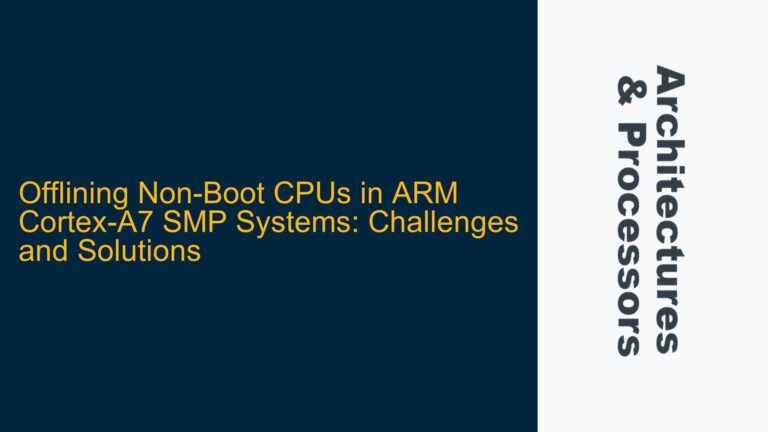Cortex-A78 Multicore Bare Metal Startup Challenges
When working with the Cortex-A78, a high-performance multicore processor, one of the most critical tasks is developing bare metal startup code. This code is responsible for initializing the hardware, setting up the memory system, and transitioning control to the application. The Cortex-A78, being part of the ARMv8.2-A architecture, introduces several complexities that are not present in its predecessors, such as the Cortex-A77. These complexities include advanced power management, cache coherency across multiple cores, and the need for precise initialization sequences to ensure that all cores boot correctly.
The Cortex-A78 typically operates in a cluster configuration, where multiple cores share L1 and L2 caches. This shared cache architecture introduces challenges in ensuring that each core has a consistent view of memory during the boot process. Additionally, the Cortex-A78 supports features like dynamic voltage and frequency scaling (DVFS), which must be carefully managed during startup to avoid instability. The lack of readily available bare metal startup code for the Cortex-A78, especially in comparison to older processors like the Cortex-A77, further complicates the development process.
Developers often rely on example code provided by ARM or third-party tools like ARM DS-5 Ultimate. However, as noted in the discussion, the DS-5 Ultimate license may not include specific examples for the Cortex-A78, leaving developers to adapt code from older processors. This adaptation process is non-trivial, as the Cortex-A78’s architectural differences can lead to subtle bugs if the startup code is not properly tailored.
Multicore Initialization and Cache Coherency Issues
One of the primary challenges in developing bare metal startup code for the Cortex-A78 is ensuring proper multicore initialization. Unlike single-core processors, where the boot process is relatively straightforward, multicore systems require careful coordination to ensure that all cores start in a known state. This coordination is particularly important in the Cortex-A78, where cores share L1 and L2 caches. If the caches are not properly invalidated and initialized, cores may end up with inconsistent views of memory, leading to unpredictable behavior.
Another critical issue is cache coherency. The Cortex-A78 uses the ARMv8.2-A memory model, which includes support for the Cache Coherency Interconnect (CCI). The CCI ensures that all cores in a cluster have a consistent view of memory, but this coherency must be explicitly managed during the boot process. Failure to do so can result in cores executing stale instructions or accessing outdated data, leading to system crashes or data corruption.
Power management is another area that requires careful attention during startup. The Cortex-A78 supports advanced power management features like DVFS, which allows the processor to dynamically adjust its voltage and frequency based on workload. However, these features must be disabled or carefully managed during the boot process to ensure that the processor operates at a stable frequency and voltage. Improper management of power settings can lead to instability, especially during the early stages of boot when the system is most vulnerable.
Developing and Debugging Cortex-A78 Bare Metal Startup Code
To develop robust bare metal startup code for the Cortex-A78, developers must follow a structured approach that addresses the unique challenges of this processor. The first step is to initialize the processor’s registers and caches. This includes setting up the stack pointer, enabling the MMU, and invalidating the caches to ensure that all cores start with a clean slate. The ARMv8.2-A architecture provides specific instructions for cache management, such as the Data Cache Clean and Invalidate (DC CISW) instruction, which should be used to ensure cache coherency.
Next, developers must initialize the multicore environment. This involves setting up the GIC (Generic Interrupt Controller) to handle interrupts across all cores and ensuring that each core is assigned a unique identifier. The Cortex-A78 supports both symmetric and asymmetric multiprocessing, so developers must decide on a boot strategy that suits their application. In symmetric multiprocessing, all cores execute the same code, while in asymmetric multiprocessing, each core may execute different code. Regardless of the strategy, it is essential to ensure that all cores are properly synchronized before transitioning to the application.
Power management is another critical aspect of the startup process. Developers must disable DVFS and other power-saving features during boot to ensure that the processor operates at a stable frequency and voltage. Once the system is fully initialized, these features can be re-enabled to optimize power consumption. It is also important to configure the processor’s power domains and clock sources correctly, as improper configuration can lead to instability or even hardware damage.
Debugging bare metal startup code for the Cortex-A78 can be challenging, especially in a multicore environment. Developers should use tools like ARM DS-5 Ultimate, which provides advanced debugging capabilities for ARM processors. These tools allow developers to set breakpoints, inspect registers, and monitor cache coherency across all cores. Additionally, developers should make use of the Cortex-A78’s built-in debug features, such as the Embedded Trace Macrocell (ETM), which provides detailed trace information that can be used to diagnose complex issues.
In conclusion, developing bare metal startup code for the Cortex-A78 requires a deep understanding of the processor’s architecture and careful attention to detail. By following a structured approach and leveraging the right tools, developers can overcome the challenges posed by this advanced multicore processor and create robust, reliable startup code.
